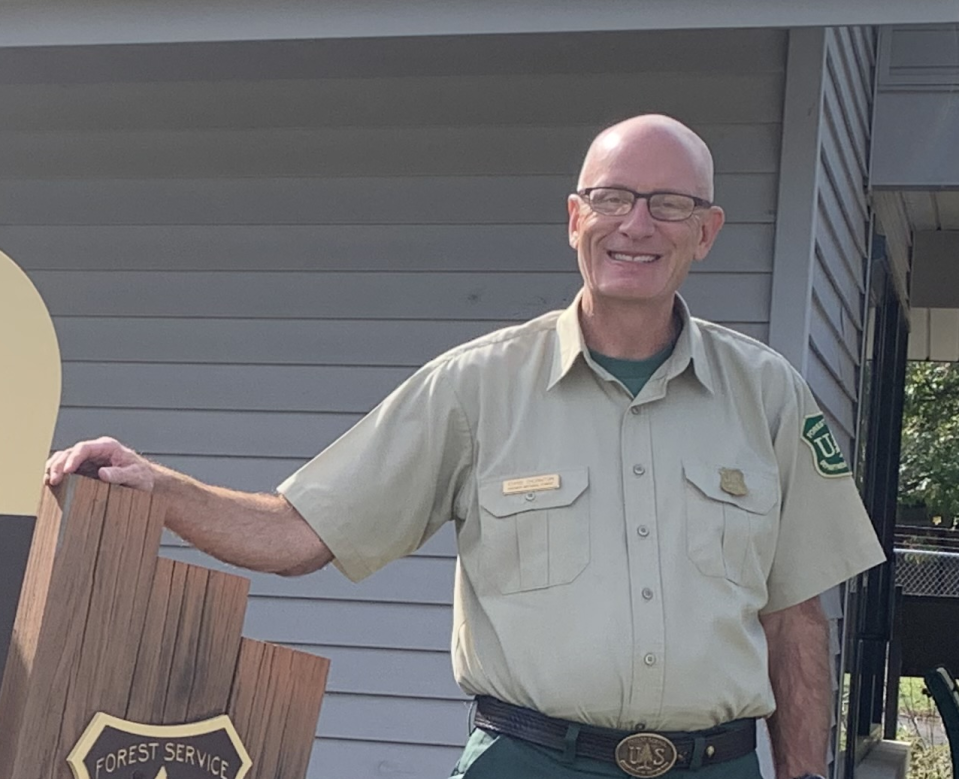Column: Houston South project is necessary for health of Hoosier National Forest
Hoosier National Forest staff recently prepared and released a Draft Supplemental Environmental Assessment (EA) for the Houston South Vegetation Management and Restoration Project. Due to threats posed by climate change, non-native species, and insects and disease, the current forest conditions within the Houston South Project area are unsustainable.
With the goal of long-term health and sustainability in mind, inaction is not an option. We are seeing steady declines in forest health, while climate change models show that we can expect more intense periods of droughts, floods and other stressors which are likely to accelerate that decline in forest health. The need for the Houston South Project is well supported by an extensive body of science and is critical to the long-term well-being and resilience of our forests in southern Indiana.

Throughout the development and analysis of this project, Tribal Nations and stakeholders, including many conservation-focused organizations, provided input. However, there are several reasons why this new supplemental assessment was done.
First, we needed to provide further analysis on the potential impacts to Monroe Lake and better clarify the data that was used to conclude that the project will not have an adverse effect on the water quality of the lake. Second, new information relevant to the project became available after the original decision was made, which needed to be evaluated and included.
Assessment released: Would Hoosier National Forest project endanger a key Southern Indiana drinking water source?
New information included changes in threatened and endangered listings for bat species, the Secretary of Agriculture’s Memorandum on Climate Resilience and Carbon Stewardship of America's National Forests and Grasslands, the 2022 National Prescribed Fire Program Review, the Friends of Lake Monroe’s Lake Monroe Watershed Management Plan and some alarming forest health information for the project area.
State and federal agencies are documenting additional oak decline on approximately 10% of the forested land within the Houston South Project area. Oak decline is caused by environmental stresses and fungal pests, and new research suggests it can be exacerbated by competition for water, nutrients and light in overly dense forest stands. Actions proposed in the Houston South Project will address forest health issues including oak decline.
The Forest Service is as equally concerned as the public with protecting water quality during project implementation, including the water quality of Monroe Lake. Projects like Houston South will protect and improve water quality by managing for diverse, healthy forests that contribute to healthy waterways in and around the Hoosier National Forest.
Independent research, as well as monitoring of prior projects, demonstrate that the science-based practices implemented on these kinds of projects are exceedingly effective at preventing soil erosion from impacting water ways.
The Supplemental Environmental Assessment includes this information and clarifies the demonstrated effectiveness of erosion control measures for projects like Houston South and shows that following our standards and guidelines reduces sedimentation and would not affect the water quality of Monroe Lake.
The forests of southern Indiana are highly fragmented, interspersed with private lands and heavily influenced by human activity. Many of the natural structures and processes necessary to sustain healthy forests in the long run are no longer present.
Our management aims to mimic those missing pieces to return to a resilient forest that provides for the needs of the public and native wildlife species in perpetuity. Additionally, forest health is an important part of climate change resilience. We need healthy trees absorbing carbon and diverse conditions that can withstand the shocks of climate change.
Join the conversation: How to submit a letter to the editor or guest column to The Herald-Times
The project will provide many benefits to the forest, local communities, the visiting public, and fish and wildlife as it improves forest health and resiliency by restoring native hardwoods in areas of non-native pine plantations, regenerating and strengthening the declining oak-hickory ecosystem, restoring stream flows, improving the sustainability of our trails, and balancing carbon sequestration rates and storage by providing forest composition and age-class diversity.
Leaving these forests to fend for themselves not only fails to address the current threats to their health but increases the risks to the forest over time. Simply put, there is too much at stake to do nothing.
I invite you to review and comment on the Draft Supplemental EA during the 30-day comment period and thank you for your keen interest in our Hoosier National Forest.
Chris Thornton has been the District Ranger on the Hoosier National Forest since 2021. He’s been stationed on the Hoosier National Forest for over 20 years and has held several positions including Forest Silviculturist and Ecosystem Program Manager. He has a forestry degree from Purdue University.
This article originally appeared on The Herald-Times: Column invites comments on Houston South project update

